Mikrokopter Hexa-XL Flies over Mount Auburn Sphinx
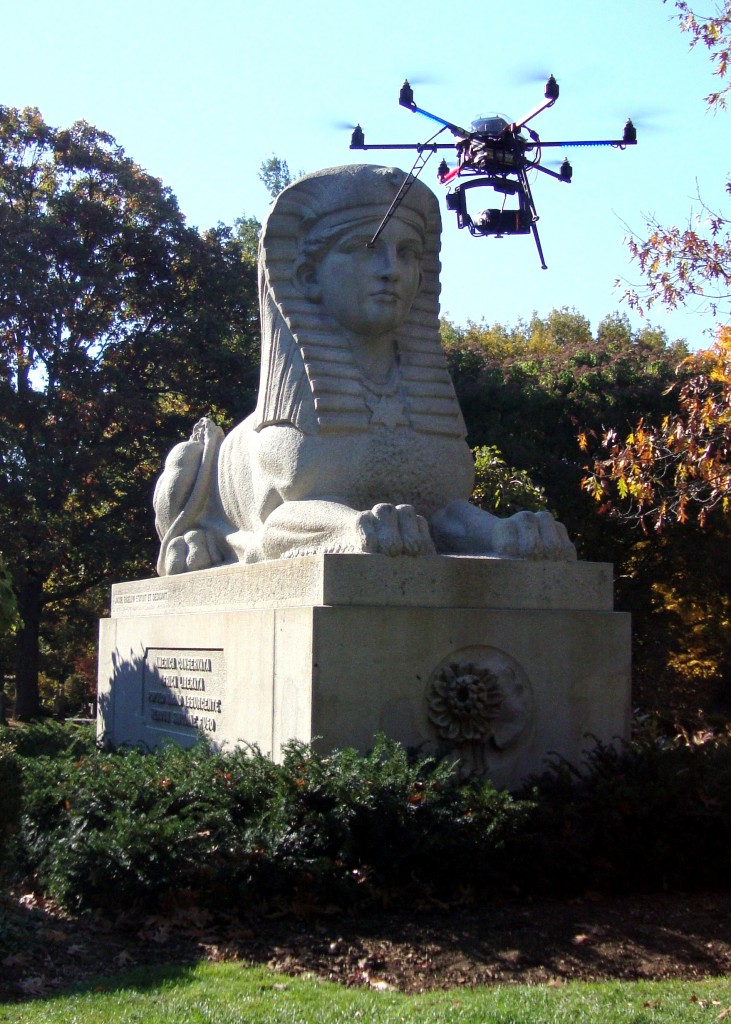 In October 2013, software developer Eben Gay flew the Mikrokopter Hexa-XL over Mount Auburn. The hexacopter, about 30-inches across with a Sony NEX-5R camera attached, was controlled by long-range radio and streamed video to special goggles.
In October 2013, software developer Eben Gay flew the Mikrokopter Hexa-XL over Mount Auburn. The hexacopter, about 30-inches across with a Sony NEX-5R camera attached, was controlled by long-range radio and streamed video to special goggles.
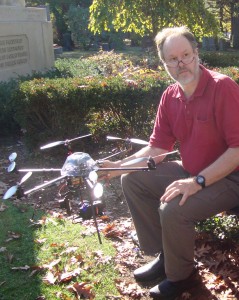
Software developer Eben Gay with a Mikrokopter Hexa-XL at Mount Auburn.
The project began, oddly enough, in the Sudan. Dr. Timothy Kendall, Co-Director of the Qatar-Sudan Archaeological Project for Jebel Barkal, has been reconstructing stone archaeological remnants on the Jebel pinnacle (www.jebelbarkal.org) and experimenting with new equipment to gather data. Previously available technologies operated at the wrong scale: climbing gear gets you to the summit, but then you’re too close to put the details in context. Helicopters give you the big picture but cannot get close enough to capture detailed images.
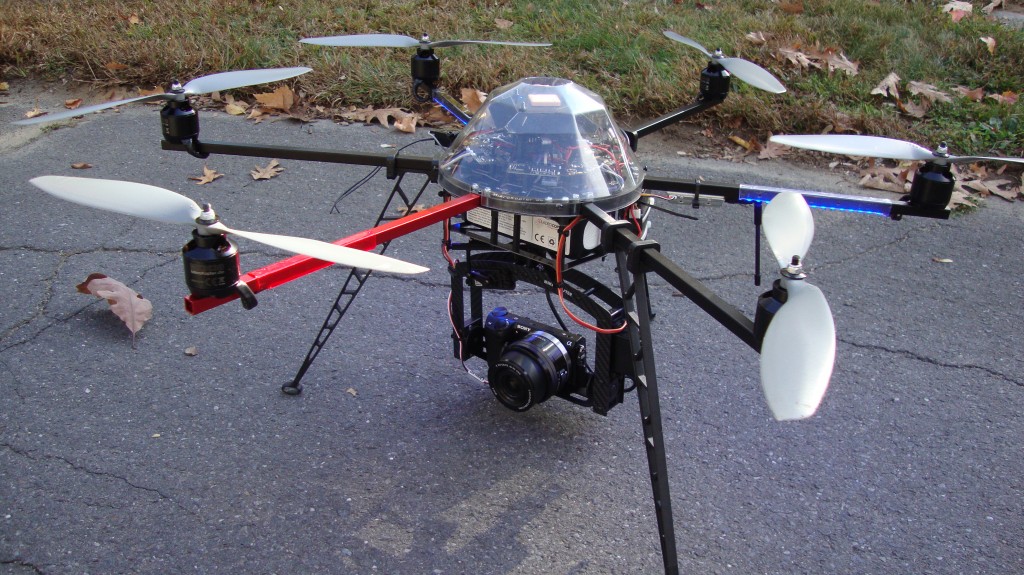
Mikrokopter Hexa-XL with a Sony NEX-5R camera attached
However, recent software innovations have made it possible to create 3D models from photographs. Small camera-drones could photograph the Jebel pinnacle, Kendall believed, and the resulting 3D models could then be viewed from any position or distance, even if no photos were taken from that location.
But where to test the drone before taking it all the way to Sudan? “We required a large object of material similar to the monuments at the Jebel—with space to fly,” says Kendall. “Mount Auburn Cemetery graciously allowed us to use the Sphinx.”
Enter Eben Gay and the hexacopter. The software requires significant overlap between photos and pixel-level clarity. This means flying a tightly controlled path and keeping the hexacopter stable during each photo. The pilot/photographer has to juggle vertical/horizontal/rotation controls while tracking the hexacopter directly and also monitoring the camera view through goggles.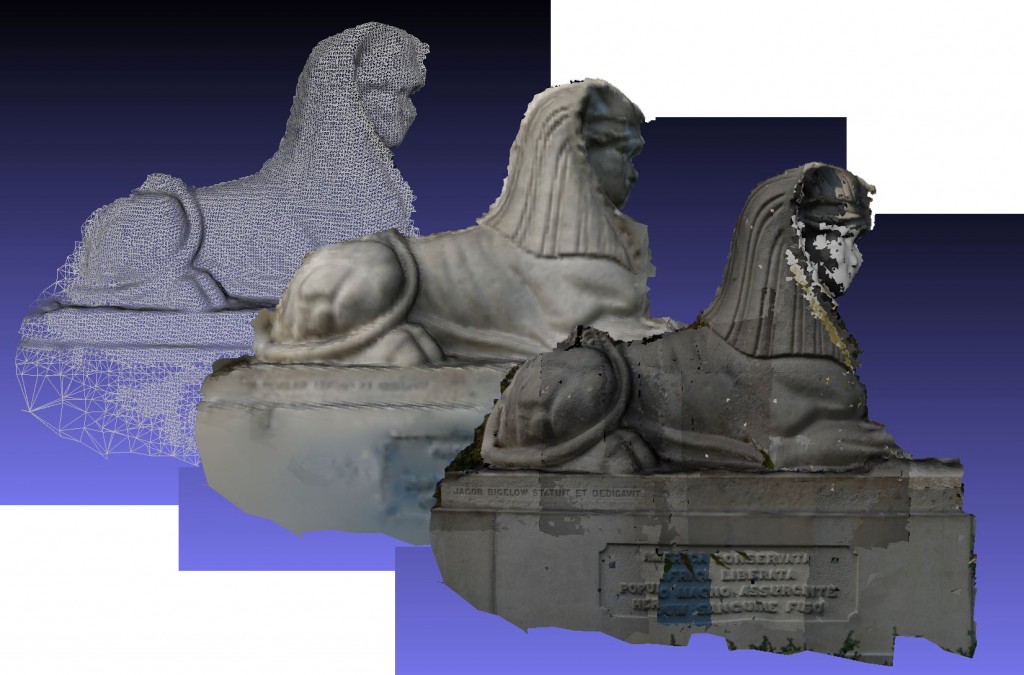
When software processed the photos, there were issues with blurred images and insufficient overlap, and the team was only able to model one side of the Sphinx. Patches of leaves and sky mixed with granite, and shadows affected the granite color. “We learned from our mistakes,” Kendall reports, “but the hexacopter was sent to the Sudan before it could return to the Sphinx.”
Nevertheless, he adds, “The experience was invaluable in developing the process and for practice flying and photographing. We are deeply appreciative of the opportunity and hope to return to generate a high quality model of the Sphinx.”
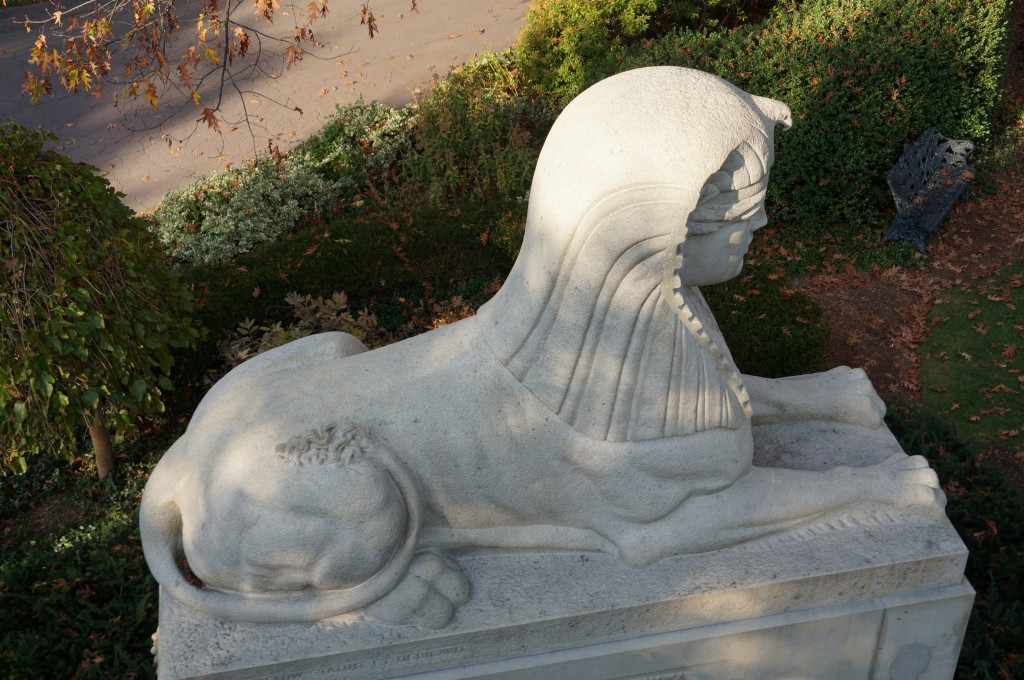
*Special thanks to Eben Gay and Ann Powers for this article and for providing us with images taken from the Mikrokopter Hexa-XL.
Leave a Reply